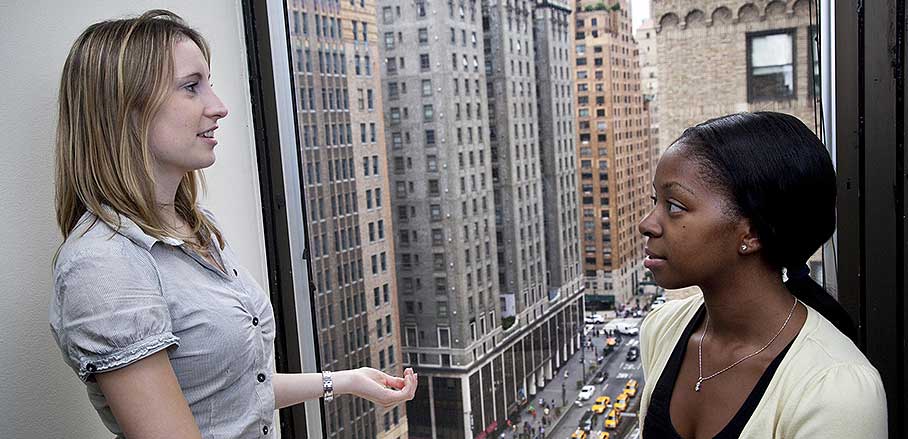Youth: Habitat III’s Force to Be Reckoned With
By Christopher Dekki
An Interagency Task Team on Sustainable Urban Development linked to the Technology Facilitation Mechanism. Biennial global Habitat III Follow-Up Fora preceded by similar events at the regional level. Clear linkages to the High-Level Political Forum and the review mechanisms of other key sustainable development frameworks. Recognition of the need to frame urban development within the context of planetary boundaries and the biological support systems of the earth.
These are but a few possible means by which to create a more meaningful and serious New Urban Agenda as the outcome of the Third United Nations Conference on Housing and Sustainable Urban Development (Habitat III). Yet, to those untrained in the ways of the UN, the preceding phrases may seem like an overload of policy wonk jargon theorized by technocrats. In reality, these are some of the extremely nuanced Habitat III advocacy positions of the UN Major Group for Children and Youth (UN MGCY), the officially mandated space for children and youth participation in a number of UN processes. As in all of the intergovernmental processes in which the UN MGCY participates, these positions come from consultations with young people all over the world in an effort to mobilize youth organizations around key UN negotiations. Throughout the process, the UN MGCY has brought to the Habitat III negotiations a deep knowledge and expertise that goes far beyond simply inserting the words “children and youth” into the text of the New Urban Agenda.
Navigating the UN system and its confusing array of interlinked development frameworks can be a daunting task for any overworked, underpaid or volunteer activist who is simply fighting for what he or she believes is right. Certainly, young people, a crucial constituency in these global processes, are no exception. Beyond simply a lack of capacity of many young people, ageism can often serve to discourage youth working in policy advocacy. Despite these challenges, the UN MGCY has brought a vast number of youth-led organizations, as well as child-focused agencies with which they partner, to the negotiating table.
As the abovementioned positions prove, the youth active in the UN MGCY are not simply calling for basic edits to the text of the New Urban Agenda. In fact, they are demanding that the outcome of Habitat III live up to the transformative nature of the 2030 Agenda for Sustainable Development. This means a number of things, namely that the New Urban Agenda include a robust follow-up and review mechanism, that the inclusion of major groups and other stakeholders in implementation and review go beyond mere words, and that mechanisms are established to measure the implementation of the New Urban Agenda in connection with the Sustainable Development Goals (SDGs). It also means that one of the dimensions of sustainable development, environmental protection, be deeply embedded in the New Urban Agenda through concepts critical to promoting more sustainable human behaviour, like planetary boundaries.1
Notwithstanding the advocacy efforts of the UN MGCY and other stakeholder groups in the Habitat III process, the current zero draft of the New Urban Agenda misses the mark in terms of concrete mechanisms for follow-up and review. In line with the demands of the UN MGCY, the New Urban Agenda must have a dedicated intergovernmental follow-up forum as to ensure that there is serious political weight given to implementation.
Moreover, there must be a UN system-wide approach to tackling the issues of urbanization and sustainable urban development. The facts surrounding the unsustainable growth of our cities are very well known. It will surely take more than a single UN entity to drive the change needed to make our cities and human settlements sustainable sources of human development and environmental protection. The UN MGCY has been urging the negotiators in the Habitat III process to consider establishing mechanisms by which UN-Habitat can coordinate work around urban issues with other UN agencies, especially the UN Department of Economic and Social Affairs (UNDESA). This would serve to ensure that interagency and system-wide attention is given to the urban sphere and catapult the importance of the New Urban Agenda in terms of achieving the SDGs.
The foresight of groups like the UN MGCY has served to enhance the conversation around sustainable urban development. It has also brought greater attention to the New Urban Agenda as a framework that matters in terms of achieving the development paradigm shift called for in the 2030 Agenda. It is critical that these young voices for change are not ignored as the negotiating process nears its end. There is no question that urbanization is a megatrend that must be dealt with accordingly. It is positions like those of the UN MGCY that truly tackle these issues in a manner consistent with the severity of what is at stake: the future of the planet.
Young people are certainly bearing the brunt of the unsustainable policy choices of the past. They are now providing member states in Habitat III and other important intergovernmental processes with the mechanisms by which the sustainable development of cities and human settlements will become a reality.
1 Stockholm Resilience Centre, The nine planetary boundaries
